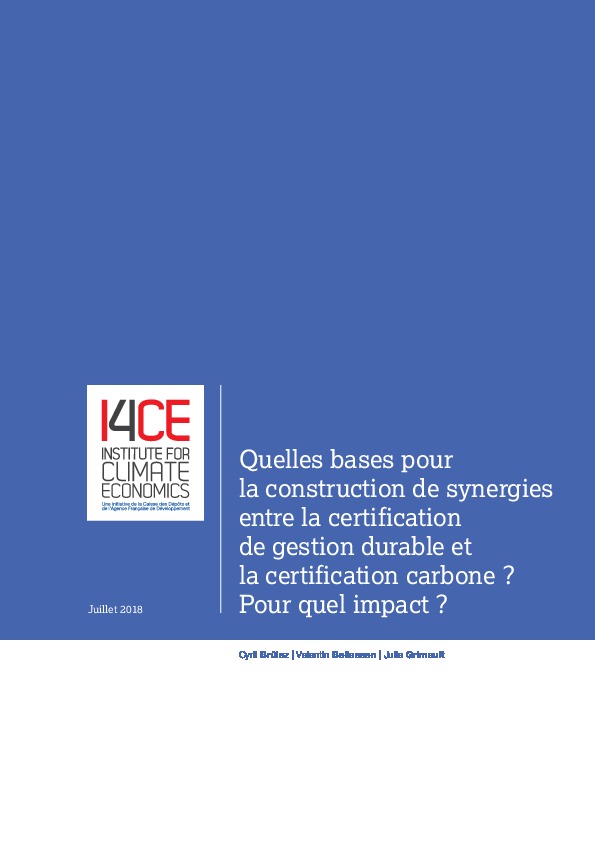Building synergies between sustainable forest management certification and carbon certification: what bases are there and for what impact?
What is carbon certification for a forestry project? What is the difference with sustainability certification? How do these different frameworks interact and what synergies can be built?
Coming from the work of the Club Carbone Forêt Bois, led by I4CE, this study answers these various questions by presenting the characteristics and issues related to sustainable management certifications (e.g. PEFC and FSC) and carbon certifications (e.g. VCS (now Verra), Gold Standard, etc.).
A certification framework aims to overcome information asymmetry between producers and consumers of services or goods, by offering guaranteed information on the production chain.
In the case of a company wishing to offset part of its emissions, carbon offset standards guarantee the sequestration service rendered by a forest and attributable to the forest manager. In the case of the purchase of a wood product, sustainable forest management labels attest to the respect of social and environmental criteria in forest management and wood processing.
The area under certified sustainable forest management is modest worldwide (about 10%) but represents 15 times the forest area engaged in certified carbon offset projects. These two types of certification have different objectives but often promote similar silvicultural practices and the types of stakeholders, forest manager, State, auditor, NGO, etc. involved in both frameworks overlap quite widely.
While both types of certification aim to promote better forest management, their objectives and the indicators taken into account differ :
- Carbon certification estimates precisely the carbon gain and especially its additionality, i.e. the absence of windfall effect.
- Sustainable management certification does not certify these two points but attests to the implementation of environmentally friendly practices and a continuous improvement approach to forest management.
These differences impact the elements audited to obtain certification.
The economic incentive given by the two types of certification is also different: premium on the selling price of wood on the one hand and revenue generated by the sale of carbon credits on the other. The costs associated with carbon certification are also higher than those associated with sustainable management certification, but it also allows the owner to generate much higher and earlier revenues as soon as the sale of carbon credits begins.
Currently, few concrete links exist between the two types of certification, even though their scope is becoming more uniform and closer connections are developing: for example, the Forest Stewardship Council (FSC) submitted guidelines in 2017 to “demonstrate the impact of forest management on ecosystem services“, including carbon, while carbon certification standards such as the Gold Standard allow dual certification with the FSC to demonstrate compliance with different sustainable management criteria.
The implementation of joint audits is an option for reducing certification costs often mentioned, but the gain in time is limited around 20%, according to experience with dual certification in agriculture.
